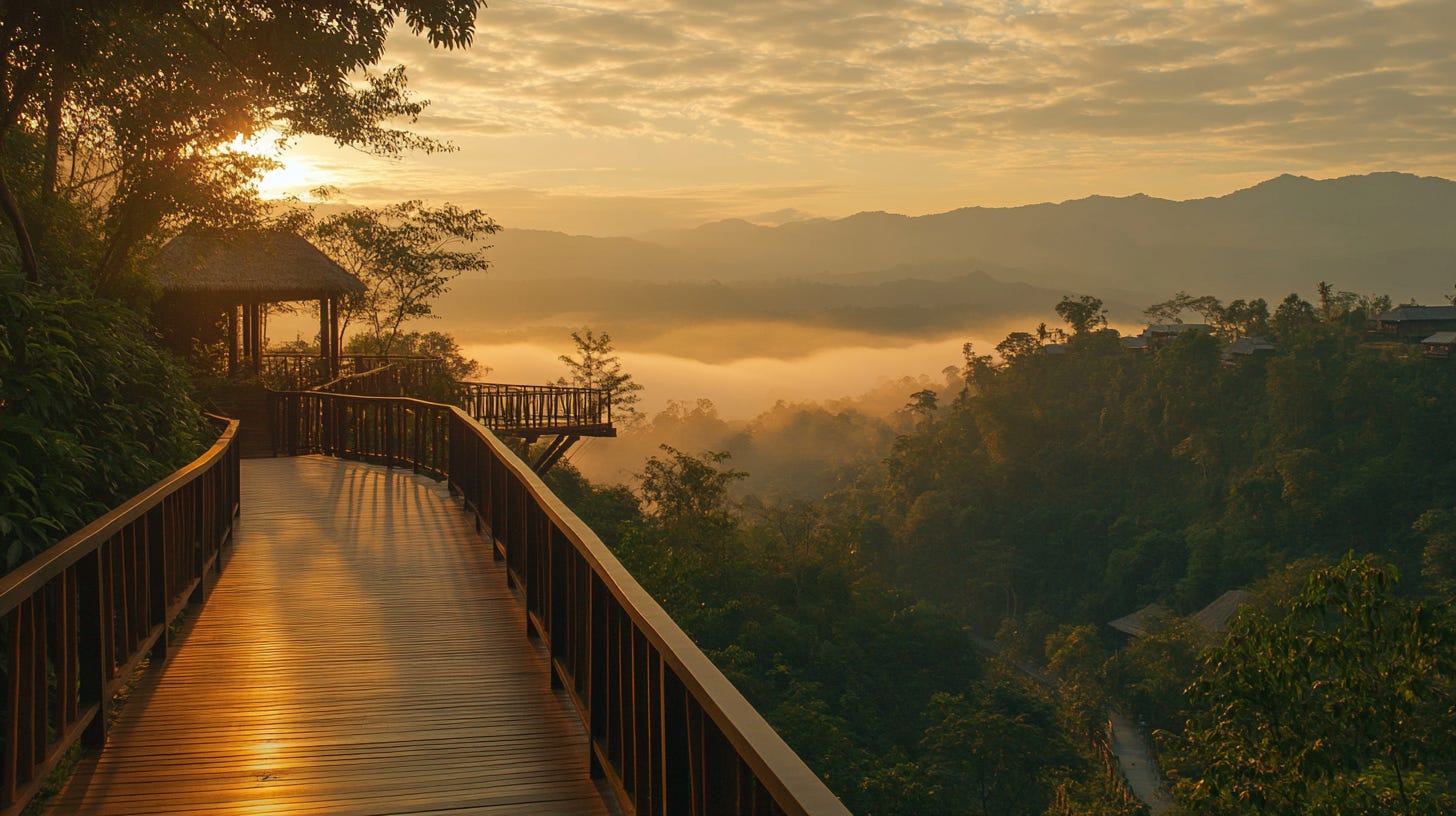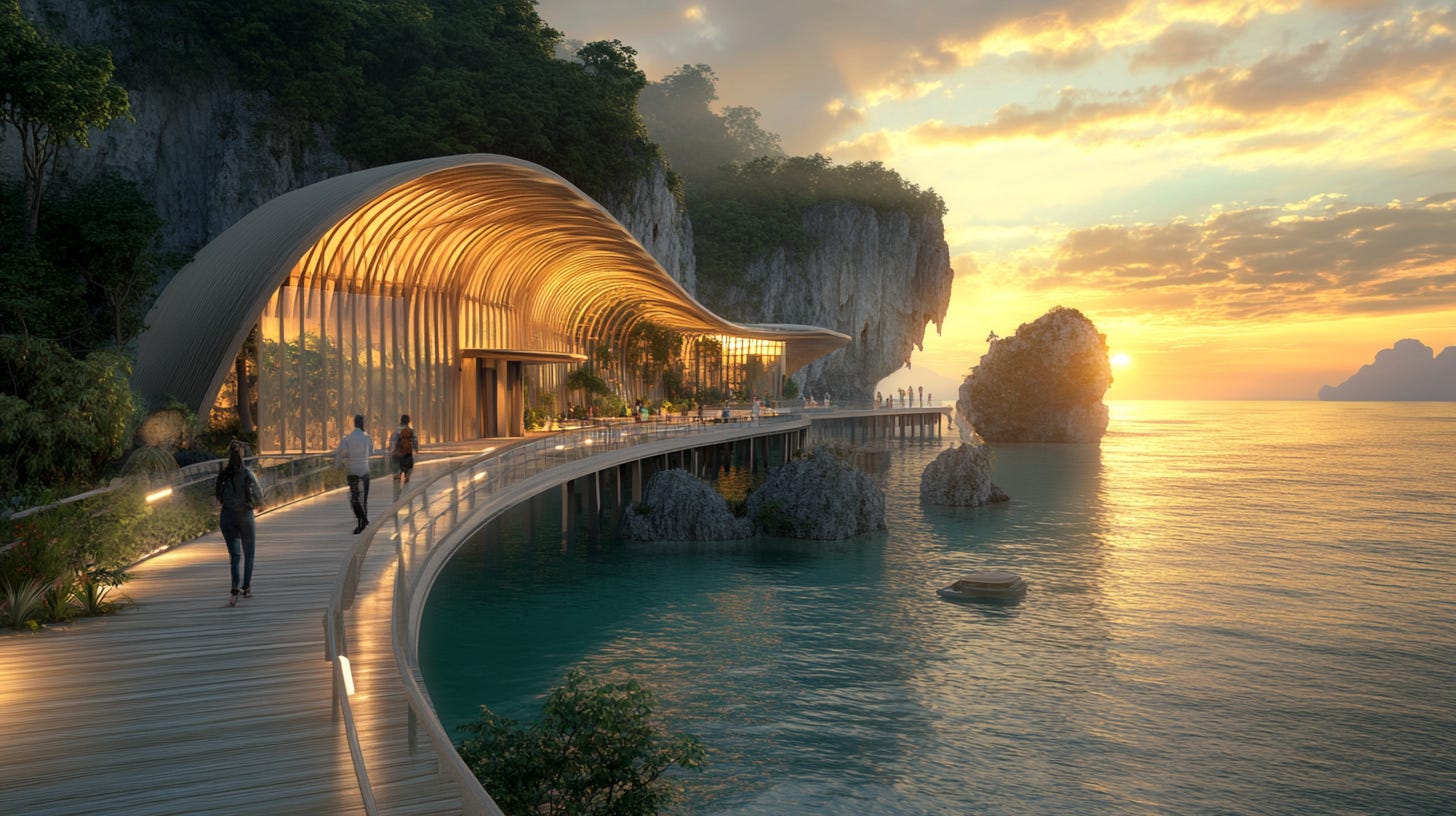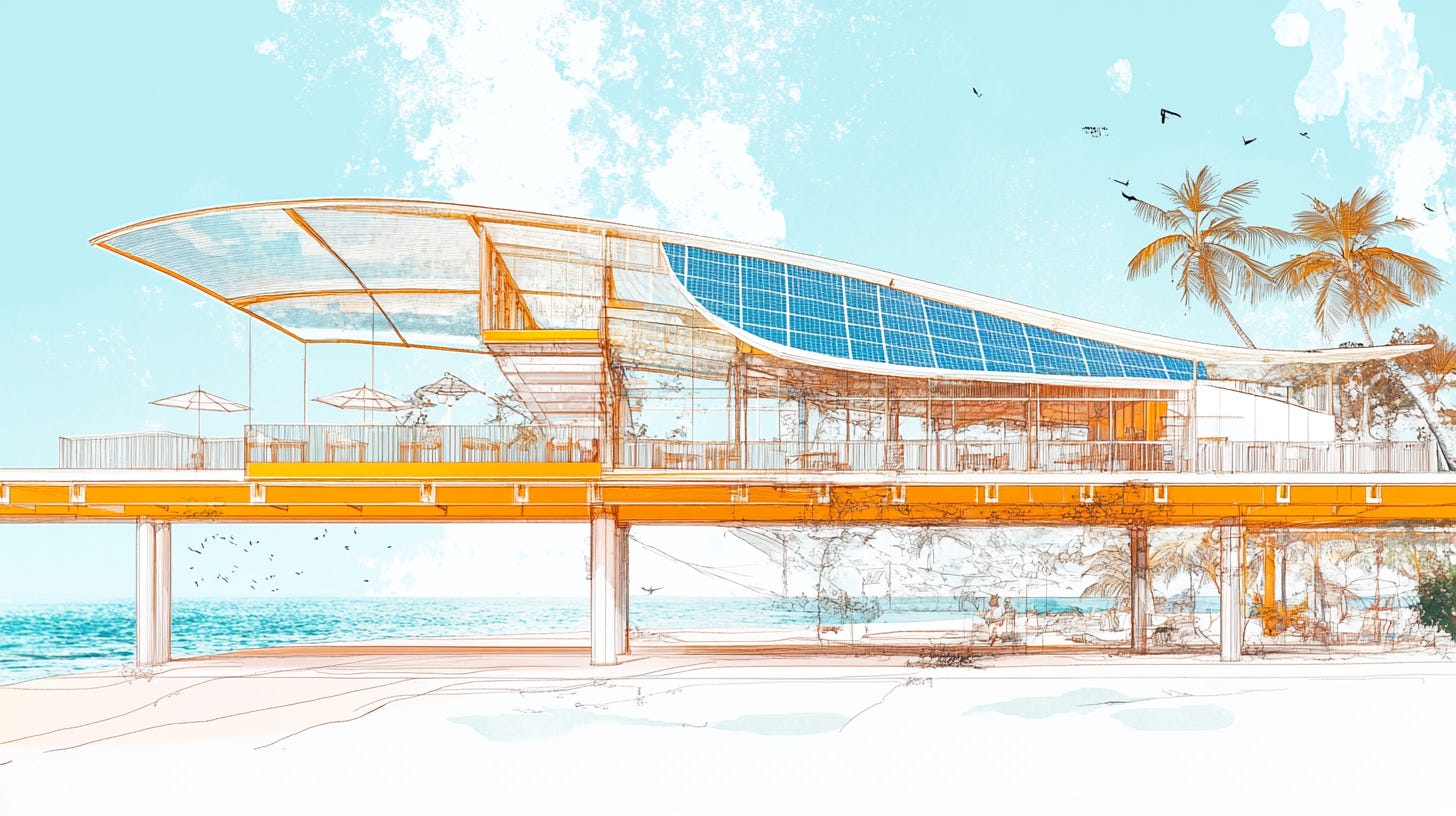The National Boardwalk: A Long Stroll Through Infinite Thailand
Infinite Thailand Strategy #2
Picture yourself on a mountain traverse between Doi Inthanon and Doi Suthep, the boardwalk weaving through the canopy of ancient forest at a gentle 3-degree incline. Mist rolls through the morning air as you pass hill tribe villages, coffee plantations, and waterfalls, all connected by this shaded pathway that lets you experience Northern Thailand's mountains without disturbing their delicate ecosystems.
Or envision an island-hopping route in the Gulf of Thailand, where the boardwalk creates a 15-kilometer figure-eight loop around Koh Samui, connecting temples, beaches, and local communities via a path that offers stunning views while protecting the island's natural beauty.
None of these walks exist today. But they could all become reality through the National Boardwalk project—the second of the ninety-nine Infinite Thailand Strategies.
The Vision
The National Boardwalk would be the world's largest covered pedestrian network: 3,000 kilometers of shaded, elevated pathways connecting Thailand's most beautiful locations. The system would feature:
Elevated paths 3-5 meters above ground or water
Curved roofs with integrated solar panels
Rest stations every 2 kilometers
Digital wayfinding systems
Emergency response stations
Local vendor spaces at key nodes
Bicycle lanes on major routes
Night lighting powered by solar energy
The Numbers
Based on construction costs from similar elevated walkway projects in Southeast Asia, the total system would cost approximately 450 billion baht ($13 billion USD). This includes:
Basic boardwalk construction: 120 million baht per kilometer
Premium sections (over water/difficult terrain): 200 million baht per kilometer
Rest stations and amenities: 50 billion baht
Digital infrastructure: 20 billion baht
Emergency systems: 30 billion baht
The Benefits
Conservative projections suggest the National Boardwalk would generate:
Tourism Revenue
300 billion baht annually from new tourism activities
Extension of average tourist stay by 2.3 days
Creation of new "walking tourism" market segment
Development of premium "boardwalk trek" packages
Local Economic Development
50,000 new jobs in tourism and services
Development of new local businesses along routes
Increased property values near major nodes
New opportunities for eco-tourism ventures
Environmental Benefits
Reduced impact on sensitive environments
Solar power generation from roof panels
Protected walking corridors for wildlife
Decreased vehicle usage in tourist areas
Implementation Phases
The project would be developed over 15 years in five phases:
Phase 1 (Years 1-3):
100km pilot network in Phuket
Initial island connectivity system
Development of construction standards
Testing of materials and systems
Phase 2 (Years 4-6):
500km expansion to major tourist areas
Andaman Sea coastal routes
Gulf of Thailand island connections
Northern mountain pilot sections
Phase 3 (Years 7-9):
800km expansion focusing on cultural sites
Connection of major temples
Integration with urban areas
Mountain region expansion
Phase 4 (Years 10-12):
800km expansion of secondary routes
Rural area connectivity
Additional island networks
Forest canopy routes
Phase 5 (Years 13-15):
Final 800km of specialist routes
Over-water sections
Remote area connectivity
System completion
The National Boardwalk represents more than just infrastructure—it's a new way to experience Thailand's natural beauty while preserving it for future generations. By creating a nationwide network of shaded pathways, we can transform how tourists and locals alike explore the Kingdom, making sustainable travel not just possible, but preferable.
For investors, the project offers multiple revenue streams through rest station operations, guided tours, and connection fees from adjacent developments. For communities, it provides sustainable economic opportunities. For the environment, it offers a way to manage tourism impact while maintaining accessibility.
The National Boardwalk isn't just a path—it's a journey into Infinite Thailand, one step at a time.



